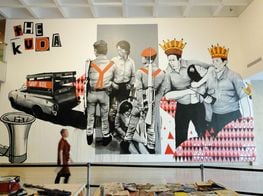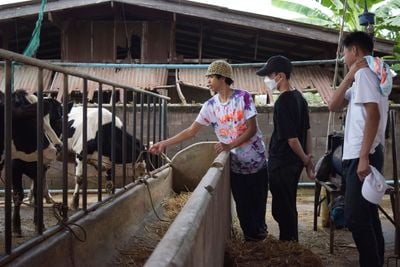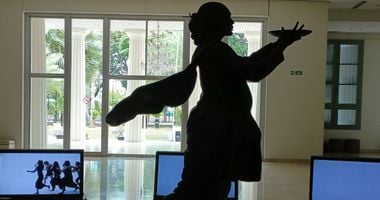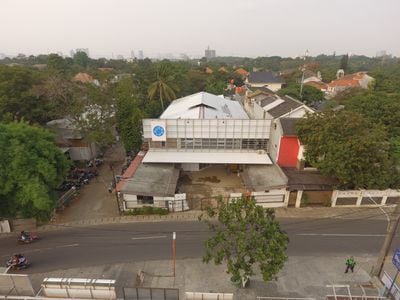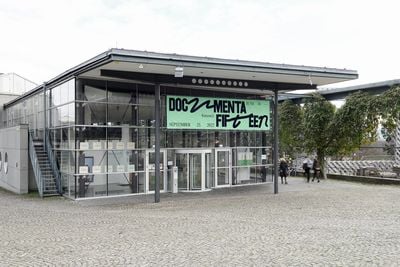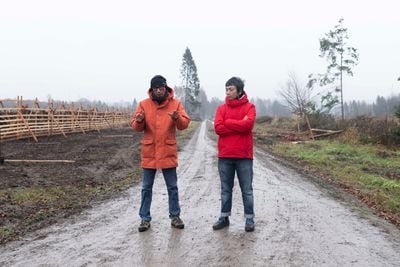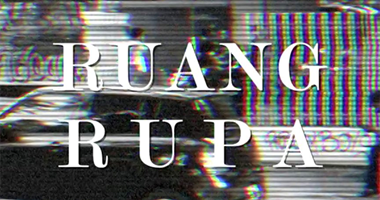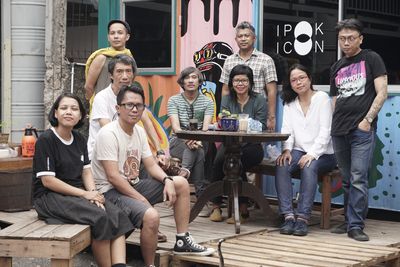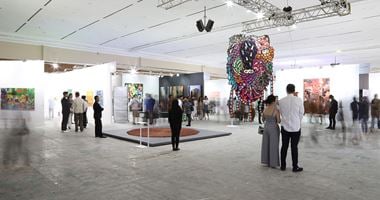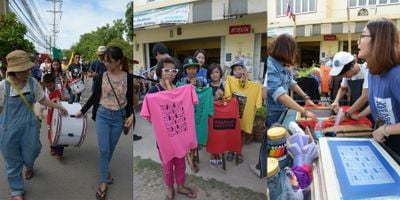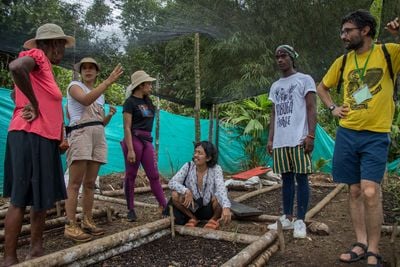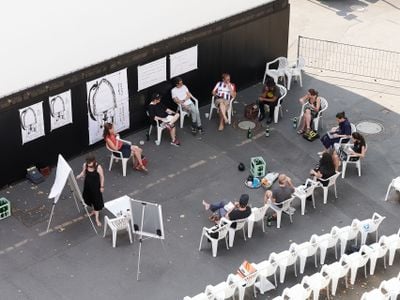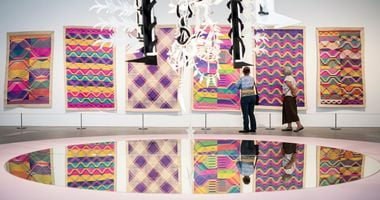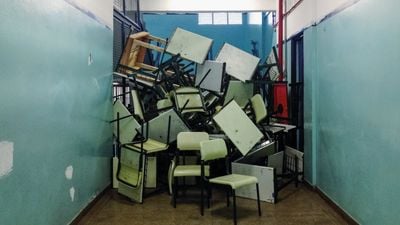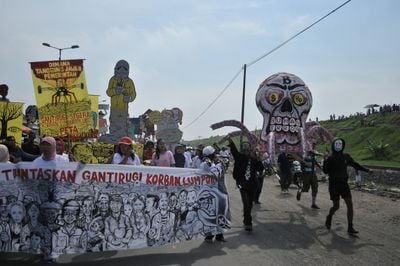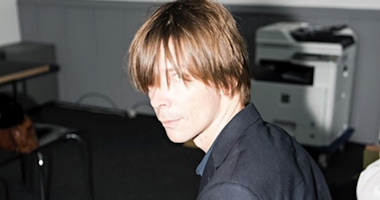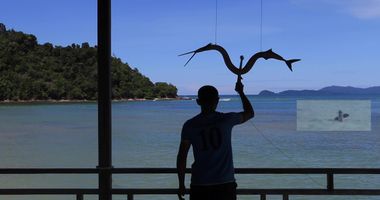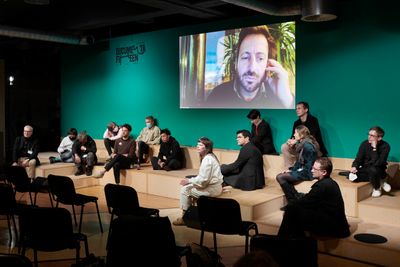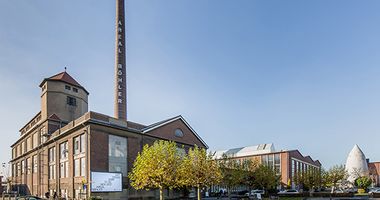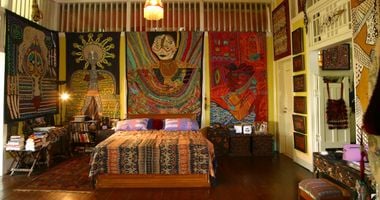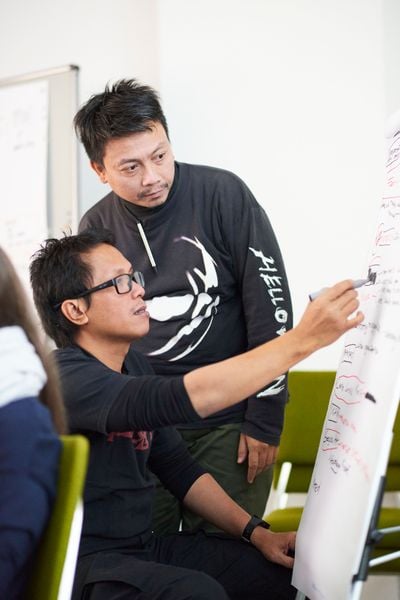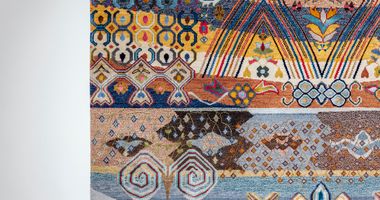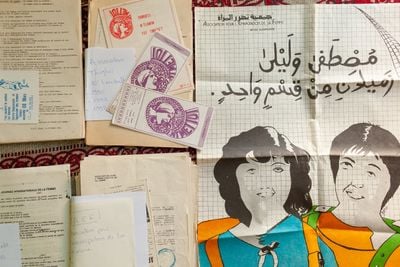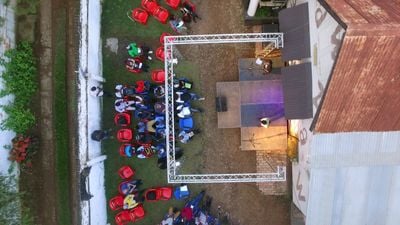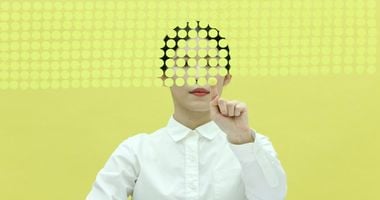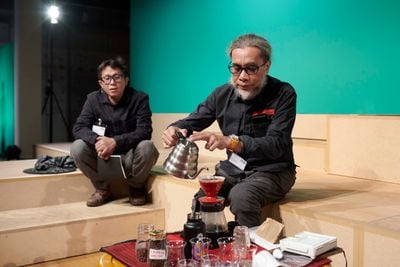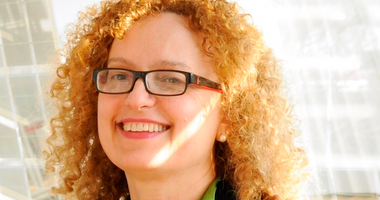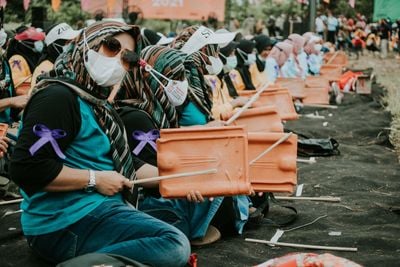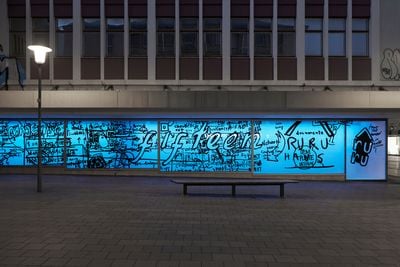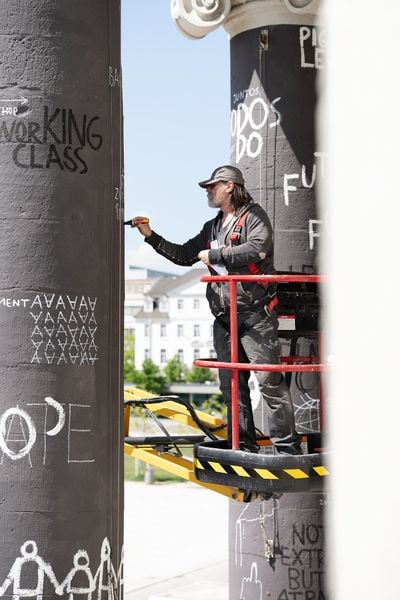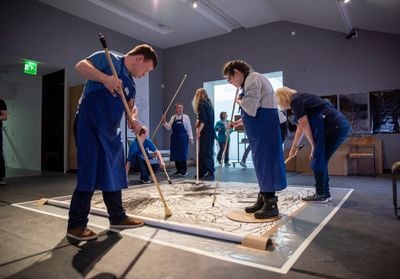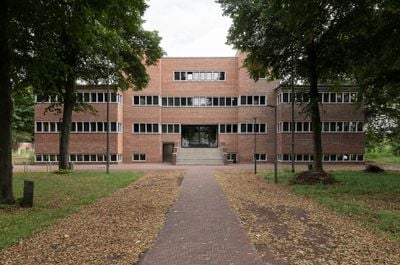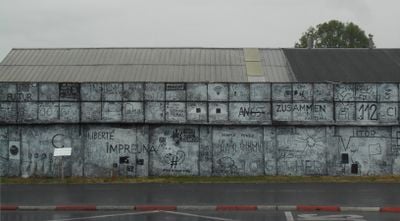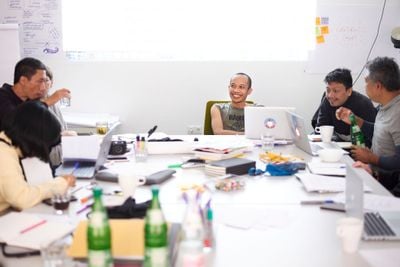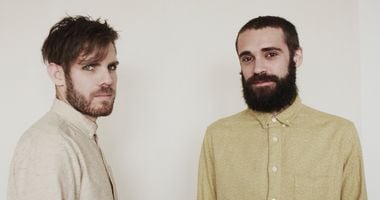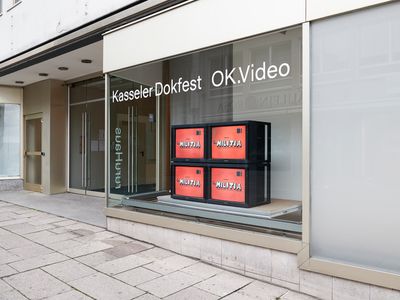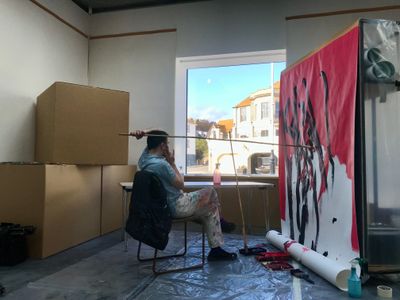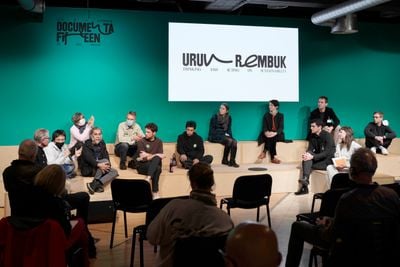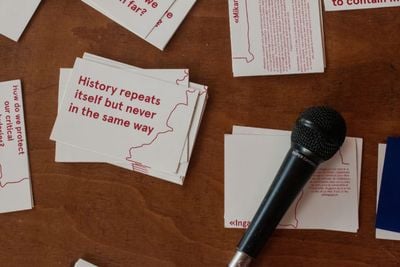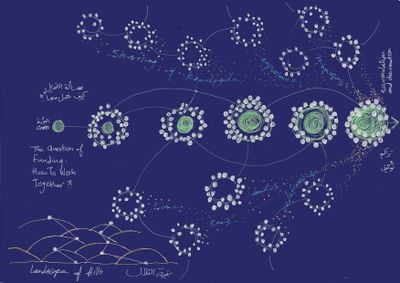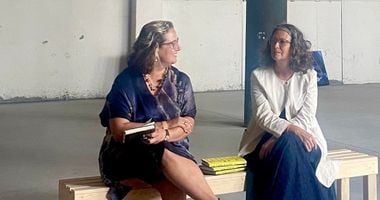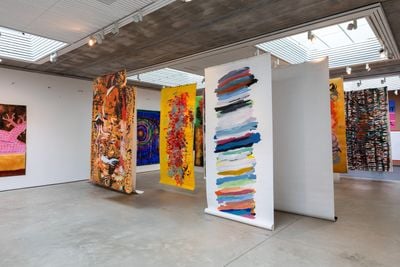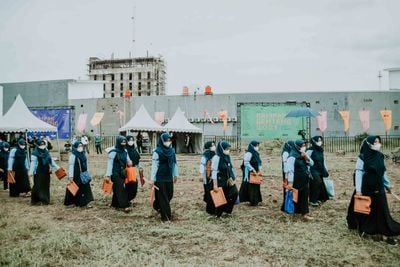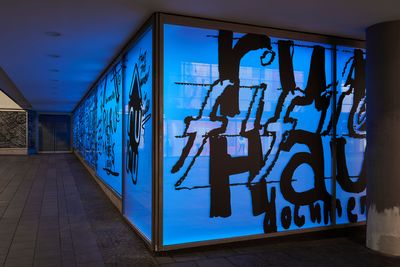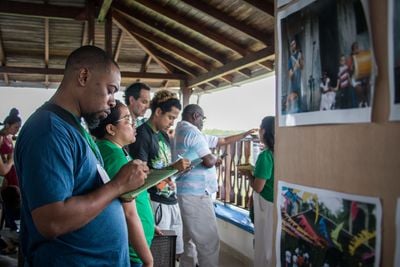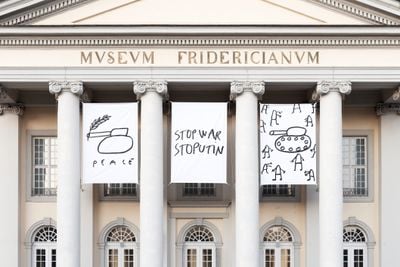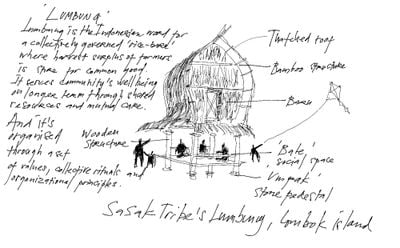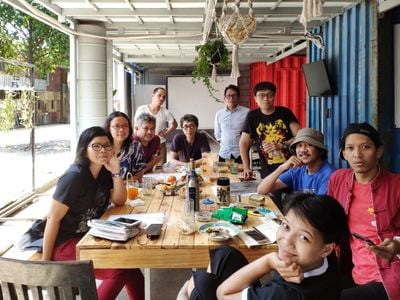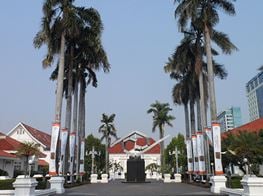ruangrupa: a sustainable model for documenta fifteen, and after
ruangrupa: f.l.t.r. Reza Afisina, Indra Ameng, farid rakun, Daniella Fitria Praptono, Iswanto Hartono, Ajeng Nurul Aini, Ade Darmawan, Julia Sarisetiati, Mirwan Andan, 2019. Photo: Jin Panji.
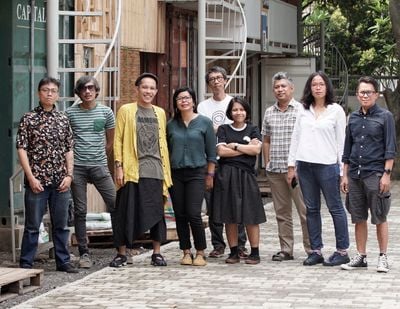
ruangrupa: f.l.t.r. Reza Afisina, Indra Ameng, farid rakun, Daniella Fitria Praptono, Iswanto Hartono, Ajeng Nurul Aini, Ade Darmawan, Julia Sarisetiati, Mirwan Andan, 2019. Photo: Jin Panji.
Established two years after the collapse of the Suharto regime, which removed mass participation from the political process in Indonesia, ruangrupa was originally a small collective of artists who only wanted more space to engage with dialogues and artistic practices, back in 2000.
Beyond securing physical space in Jakarta, Java—the most populated island in the world—ruangrupa wanted mental bandwidth for research, performance, and the critical analysis of art, which the collective felt had become relocated to a means of production.
Supported mostly by foreign funding bodies, the non-profit, known as 'ruru', embodies diverse artistic practices brought together from shared interest in critical engagement and building sustainable art ecosystems.
Its early space in South Jakarta was known to be a gathering place of sorts, with studio spaces, a library, and a research space; always lively, always open. Its shifting membership over the years mirrors the dynamic interchanges within the organisation, which may begin on the level of locality, only to expand its network beyond borders and across disciplines.
Resulting projects like the 2003 Jakarta Video Art Festival: OK. Video, Indonesia's first video biennial, introduced new artistic possibilities to the city by offering a platform to participants from 20 countries to explore ideas of body, identity, and mass culture.
This followed with the establishment of the cultural platform Gudang Sarinah Ekosistem, a creative network and interdisciplinary space that provides support for creative practices, communities, and institutions, created in collaboration with two collectives in Jakarta in 2015.
A subsequent collaboration with other collectives in 2017 founded Gudskul ('good school')—with 'gud' as the shorthand for gudang (warehouse) and 'skul' as the slang for 'school'—a knowledge-distribution system of collectives and a public learning space housing artists, musicians, architects, and designers, with emphasis on process sharing and experience-based learning.
In 2022, ruangrupa will be the first art collective and collective from South Asia to curate documenta in Kassel, Germany. Nine of its members have taken on the artistic direction for documenta fifteen (18 June–25 September 2022).
Its curatorial concept, lumbung, referring to Indonesian rice barns where surplus harvest is stored and redistributed within the community, echoes its own approach to resource allocation, whereby public and private funding is pooled and redistributed according to each organisation's needs.
Designating documenta fifteen as the collective resource 'from and for' the city of Kassel, ruangrupa conceives of the exhibition as a communal pot where ideas, stories, and time are exchanged in a circular model that eventually returns resources back into Kassel to support local art practices.
These ideas are further discussed at Kunstsammlung Nordrhein-Westfalen in Düsseldorf, where Reza Afisina, who works from Kassel, is joined by fellow ruangrupa member Iswanto Hartono for the third of a series of talks addressing mobility and housing, the co-existence of lifeforms, and economic distribution, hosted at the OPEN SPACE.
What follows is an edited transcript of the livestream conversation on 16 January 2022, in which the pair joined by curator, economist, and professor at the University of Kassel and the documenta Institut, Mi You, discuss documenta fifteen, economic models, and building sustainable ecosystems.
MYCould you introduce ruangrupa?
RAOur relationship toward notions of working collectively started before ruangrupa was initiated. We grew up together in the 1990s, and as college students, we had a friendly relationship that continues now.
ruangrupa was initiated around 2000, after the so-called New Order regime [the second Indonesian President Suharto's regime established in 1968] collapsed in 1998. Iswanto and I were not the founding members, but we worked closely with several different programmes that ruangrupa initiated since 2000.
We didn't actually have so-called membership until now. We all have individual practices as artists, designers, architects, and researchers and were already interdisciplinary in the way we worked.
Many of our friends did not originally come from Jakarta, but we all started in Jakarta. Our movement is like the movement of people from one place to another—the traffic of movement in the city, the country, and its regions.
Experiences from different social, economic, and cultural backgrounds have also created diverse behaviours and different communities. These are the maps of hybrid behaviour and social roles that influence one another, which is the context of how we work together and why we try to experience and learn different strategies.
The way we challenge and criticise things is how this collective works, and how the collective should work properly in the context of its locales and daily necessities.
As we started to try to get more funding in 2003, we had to address ourselves as a structural organisation. We had to think about strategising, from the proposals we made to the reports that we were given, and from that, different models of collective organisation and artist initiatives emerged.
It took over ten years to notice that we needed to clarify our necessities: concerns about the space, programmes, and work hours. We had to think not only about how to strengthen the network, but how to live and work together.
So we created different models and support systems—interdependent situations that respond to different organisational ways of working and institutional funding.
Indonesia is a huge archipelago, and we live in Jakarta, Java island, which has its own ways and supporting system, which is also quite different from others.
In 2015, we started thinking about creating these 'collectives of collectives', and worked with two other collectives from Jakarta to build a collective ecosystem. That is part of our introduction to this context of cities and economies and one that we would like to address more in relation to our notion of lumbung.
IHOf course, our survival was based on funding. But after many years of depending on the source, we became politically conscious. We had to think critically about sustainability and how to negotiate our survival.
To create this practice of being a collective of collectives, we share in terms of economics, human resource, energy, creativity, and so on. We call it an ecosystem.
When we were invited to documenta, we had just started to build our school and educational platform. The only reason why it made sense for us to elaborate on our process through documenta is because we understand the risks of being involved with government structures.
Based on our processes and resources, we submitted our ideas of how to use this platform as a service project with sustainability as an aim and a starting point to think about how to work with others.
Germany has its own ways of understanding what lumbung is. Likewise, we wanted to understand the term within Kassel's context, which became our entry point.
We used this opportunity to gain more accessibility and built a bigger ecosystem with friends, artists, and collectives from around the world to think together in terms of economics and sustainability. Everyone comes from different places, with their own contexts, their own problems, and social and political issues.
RAI will try to elaborate on documenta fifteen's artistic selection. To begin, there is no such thing as submissions.
We invited 14 collectives to strategise with us as lumbung members, and to invite other individuals and collectives related to their own practice, or within the network related to the articulation of the next documenta, which comes hand-in-hand.
Each collective brings in their local context, but is also related to broader networks, through which they can share knowledge and relate to their local necessities.
These are grassroots that grow. Up until two years ago now, there remained limitations to how we communicate, especially when it came to the pandemic back in March 2020.
If you saw how we announced it, you would see artists and participants related to the next documenta are shifting. We've addressed it based on time zones rather than countries. These are the communication issues we take into consideration because most of it is done online.
Since March 2020, we've had very regular, intense meetings for different subjects and conversations. For one person in Kassel, the meeting would take place early, at nine in the morning.
This is how we've coordinated so far and shared values about how we'd like to engage and think together. We wanted to care for the things outside our own contexts, as with ruruHaus in Kassel.
But these are organic processes embedded in existing networks. Since June 2021, many of our artist friends have been visiting Kassel; they were already introducing themselves and being introduced to each other.
Each participant connected to documenta fifteen forms their own assembly. They create their own models to share production and support within the group, and the network grows automatically.
IHWe've said that we don't have a submission, but there are so many proposals that come to us unofficially, even now.
Many people are interested, but that's not how it works. Within documenta fifteen, there are global members, artists, but there is also ruruHaus, which brings special attention to the Kassel ecosystem.
We try to answer as many proposals from Kassel as possible and have a special communication team for the task. We cannot always take the whole proposal, but we try to open it up based on parameters related to ideas and values that govern the documenta.
We want to be more inclusive of the Kassel ecosystem, of course, rather than through invitation alone. Many artists who come here collaborate. They also come with ideas.
RAI want to elaborate more about our context because it shapes our experience. I come from West Java, which is traditionally and culturally a farming agricultural site in the notions of lumbung, which translates loosely as a rice barn.
lumbung as a method is quite suitable to our needs, especially in daily practice. It's something that has given us more insight into the spirit of sufficiency and how we could share and distribute what we already have.
Our approach to art is more cosmological, and includes the environmental, the climate crisis, and how to think about both problems.
It's not merely about circulation on the agricultural level, but also in the spirit of knowledge and how this knowledge and network, which are already embedded within the structures we have, could be self-sufficient and distributed.
So when documenta approached us to submit a proposal, we had already been thinking about how to create a collective of collectives, since 2015.
But to negotiate this idea with awareness of the financial and structural support available while addressing sustainability, we needed different notions. In the spirit of sharing, we thought that we could each distribute this knowledge in the form of schooling.
RAWe thought about generating a school of collectives while documenting our propositions and process. So, we returned the invitation to documenta as an institution we were creating a proposal for.
If we needed to propose four documents as part of the proposal, then we needed to be acknowledged for that. If we are part of their resource, which is part of our resource, we are going to work on this together and extend this way of working in a network.
This was very connected to the conversations we'd been having even before submitting the proposal to documenta. This way, Jakarta and the Indonesian context become part of the sharing resource, a way for each of us to contribute to the idea of what we could do.
RAIn Kassel, we want to create the structure of working as a collective and work directly with its components, which includes the people we have invited to participate and the contexts that are networked as a result.
Rather than commission artists, we tried to strengthen the sustainability of their localities.
At the institutional level, take for example, how documenta's networks can grow in other institutions, organisations, or corporations that are working closely with us for documenta. These structures are not new, even if it seems like we are changing or generating change within them; there are just lots of different adjustments.
This relates to how we elaborate and collaborate with Indonesians to address their necessities, because we are concerned about the ways we think about art, educational sharing, the circular model of economies, and sustainability.
RABut the notion of accessibility is already embedded in how we work together. That's why, when we looked at the history of documenta, we tried to introduce the notion of lumbung.
There are different ways to understand what lumbung is and how it relates to the circular economy, not only within the economic context, but the social and cultural context in Germany.
Germany has its own ways of understanding what lumbung is. Likewise, we wanted to understand the term within Kassel's context, which became our entry point.
IHWe are not coming with a subject or theme for this edition of documenta, but we read the claim within the protocol, or the documents of accepted ideas within the large-scale exhibition.
The lumbung is rather a system of working that reflects on us. Of course, we do not intend to change or impose anything. We are just trying to create a platform to share and work together.
For instance, we've been trying to rethink the structure of documenta, or its commissioning system base, which is commonly used for large-scale exhibitions.
Rather than commission artists, we tried to strengthen the sustainability of their localities. What happens during documenta cycles back to each participant, resources too, cycle back into the ecosystem and the locality, which is Kassel.
IHSo it's a circular model from the piggyback, from Kassel, and then into a particular locality, and back to Kassel. We also asked each participant to contribute to what we call a collective pot, a kind of mechanism for collectively governed possessions.
It offers a barrier of protection, but they also have another pot for artists to contribute back into the collective mechanism of the economy in which it will be run. We go at it together with all the artists, so we offer them a chance while allowing them to govern their own.
In terms of upcycling and raising environmental awareness, we would like to work with Kassel, to calculate and support them and others within their ecosystems.
Another way we try to address this circular model of resources is from the inside of documenta itself. We already know its structure is very rigid, as the peer structure where the cultural funding is from.
IHBut somehow, this gives us an opportunity to rethink or introduce a different perspective on how to deal with it in the context of large-scale exhibitions.
Another thing is that in Germany, there are already many layers of established economic practices. One is the practice of recycling and upcycling, which I think is great compared to what we have in Indonesia, and gives us the opportunity to rethink.
While there have been many attempts to rethink sustainability within the large-scale exhibition, as with how museums try to address the issue through carbon emission reduction, we still wanted to think together through upcycling for this edition.
In Germany, there are large group practices that are very much established, but these are very much scattered. We try to gather them and create what we call 'material upcycling for the process of production'.
IHFor the exhibition and its production, we have worked and will work with collectives from Álamos, Berlin, Munich, Nuremberg, and many cities in China. We cycle through the process and support artists' projects and exhibition-making.
There are already circular materials within documenta regarding how to use the materials they provide and we know a place where all this used material of choice can go once documenta ends.
...while it starts with documenta fifteen, it could equally be sustained after, if the government takes care of it within the Kassel system.
In terms of upcycling and raising environmental awareness, we would like to work with Kassel, to calculate and support them and others within their ecosystems. It's much more of a scientific calculation process because it's embedded in the economy.
IHIt's also embedded in carbon emission. I think we're very aware of climate change, which is one of the topics for this edition. We work closely with the Kassel ecosystem, and not only in terms of funding. We are very much open to connect with Kassel's artists, get to know them and support them, and help them secure space and venues.
We are, of course, aware of the criticism that this is the kind of support that comes every five years only to skim and go. But while it starts with documenta fifteen, it could equally be sustained after, if the government takes care of it within the Kassel system.
MYSo you're looking at documenta as a funder and seeing this as a horizontal exchange. That points to something that's more about co-creation, being equal stakeholders, and building sustainable systems.
Especially, as we cross borders between the global north and the global south, or the more developed versus the less developed parts of the world, there's always the danger of operationalising grassroot resilience from elsewhere.
Funders can always say, if you learn to operate outside our support systems by forming your own, that gives us a reason to defund you. But what you're suggesting is much more entangled—it tries to rethink what it means to fund art and culture in a society facing tremendous challenges.
So sustainability and the circular economy go beyond their material aspects for you to include social and cultural relations. How can we rethink living together?
IHSustainability and the circular economy are also more logical and rather new ways of thinking. The process is not only the facts and numbers but includes cosmological thinking of how the concepts came to mind and the processes involved.
documenta has to offer a framework or be contextualised within art practice; that's our focus for this edition. Our approach to art is more cosmological, and includes the environmental, the climate crisis, and how to think about both problems.
That's why having another perspective on how to work with funders and share resources with the government is important.
MYThe notions of maintenance and care also play a paramount role in the way you work and are connected to the question of sustainability. How do you work with questions of labour and care?
RAI would like to step back a bit, because how we acknowledge what's called a local resource is interesting. Since the beginning, it has been a part of how we think. Several points we address by focusing on process, not only for documenta fifteen, but in the ways we function now, are really working towards different evolutions for a collective like ours, one working in the Jakarta context.
Every collective or anyone related to so-called funding bodies are always dealing with the same trajectories: how to create proposals, relate your programmes to your proposals, prove that they are part of your programme and are running, and then it becomes a report.
Then the funding body will see it as a complete package that returns to its own necessities; every activity we've done so far has involved social functions, public engagement, and public benefit.
RAAnd that's how a knowledge-distribution system could be. We are working on a report system for the funding we receive and the programmes we develop; it's something we need to sit down and discuss to acknowledge the different needs of each.
Their funding is good and suitable to us. But what if we could have another network that could be suited to the funding needs of other collectives? For example, we could have a change in terms of support, which can be anything, not only money, but also recognition and acknowledgement—another support that is about accessibility.
RAAccessibility is also support, because time is much more important for us, especially with regards to resource distribution. That would be one kind of support within this model, and something we learned so far of the relationship between social and economic structures, especially in the German context, which is very rigid and well-channelled.
Then, every community, collective, or individual that needs this particular support or funding in Germany will know how to get it because the method is very firm and already embedded.
But as we deal with different negotiations during and after the running programme, issues of sustainability arise in the organisational context, the institutional context, but also within daily necessities, in the context of Jakarta, environmental values, and ecology.
RASo when we're talking about sustainability, the subject is understood within the cosmological context. It becomes part of our responsibility as artists, or not.
documenta fifteen is only the beginning of how we seek to establish collaborations and relationships based on values derived from collective governance and decision-making.
When it comes to the Kassel ecosystem, several things are already happening, which are good and offer potential solutions. These are activities within so-called collective and community social engagement, which create their own sustainability and support at the economic level.
Neighbourhood farming or local agriculture could govern part of the land, for example. They plant something there, and each neighbour in the area could offer and receive support by donating or generating crops. Money is also involved by becoming members.
They take care of the land together and work together on harvests, so it's no longer about relating to Kassel through artistic practices; these methods are already embedded in the social context. Then, the most important outcome becomes knowledge production.
You can dwell over things that happen in daily society, which then become embedded in the supporting system, as with Kassel, where people have been together and been friends since college.
These are systematic processes that we are very keen to learn. Here, they can engage with art within the city's policies and funding policies and still work independently, which are all notions that are important to us.
IHSustainability for the process is important, but documenta fifteen is only the beginning of how we seek to establish collaborations and relationships based on values derived from collective governance and decision-making.
We look at institutional processes through the framework of sharing between actors, artists, and the many parts of the global south, as well. We are not only acting as artistic directors, but sharing our experience creating collective processes on uneven grounds.
We also take different perspectives, as with how we consider museums and institutions as spaces that enable the process of sharing and resource sharing. We consider how far we can share and how far we can accept as well.
For instance, there was an artist, Sourabh Phadke, who was interested in working more, rather than only within the process of sustainability. He didn't want to create or bring his own work, but he still shared his budget with other artists, for other projects.
RAIt's always a challenge to sustain ourselves. We're concerned about the capacity of space, which constrains the capacity to create—even now, we still need to adjust our capacity in relation to the space and infrastructures provided.
That's where the question of sustainability comes up. But we also evaluate how we position ourselves and criticise our work through our definitions, because we are dealing with sustainability within the context of artistic practice and documenta.
RAThe question of sustainability is always related to issues of warrant abuse; not being given the space or platform to create different kinds of dialogues, for instance. Being unable to address, elaborate, or take serious care of this matter.
The question of how to develop different processes is something that happens within us. These processes lead to holistic solutions to regard and approach the ways we dream of.
Along with the issue of sustainability, we are concerned about how the platform can generate different dialogues and provide an acceptable space to conceive of a broader scope of relations.
I've never been to OPEN SPACE Julia, and correct me if I'm wrong, but the four points I've mentioned are already embedded in the ways this platform conceives of space and are already workable.
Publics already accept that there is a place, or a ground, for people to share in their own time, as we are now. Even just listening to us, contributing in presence, and hearing about the things that happened in Kassel, with documenta, and with the ruruHaus.
RAThat's why we try to learn from each other and generate a greater sense that we are dealing with the same capacities and would like to address a different point of view. But what is sustainable?
It's how we articulate sustainability within different practices, how we embed it within the field of visual arts, cultural fields or outside of them, and society nowadays that gives the notion a different focus.
There is no certainty, nor ideal model, but there's always the opportunity to have different kinds of exercises that not only provide notions to experiment with, but further the steps that are already there, and see how they can be extended or lead to different inventions. It's a process that brings everyone together.
IHOur process is embedded in the circular economy from start to finish. Everything cycles back to the artists, even after documenta. Beyond supporting their practices, it also supports the German locality, where the artists practice. We have a collective artist publication project, for example, which is called the lumbung press.
In the end, it's a public art project to support artists; it's not commercial enough to give to a commercial publisher. But, because it is organised collectively, it contains the potential of all the artists who want a publisher. That becomes part of the project, which is also open to the public. Everyone can see the process during the 100 days.
It's funded by the collective, but also contains collective money from every artist. In the end, we have a collective pot meant for all participants, not to centralise or monopolise, but to incorporate art into the process. For anything that is sold, the profit returns to the artists.
The process is meant to fundraise for artists and the works themselves, which will not be returned to be sold as artworks but benefit artists directly. Some will choose the collective pot after the 100 days.
MYAnd hopefully that won't be the end.
IHWe're trying to be more people-oriented and get more breathing space to retain the endurance to continue the process after the 100 days.
MYThis is a moment for us to think and rethink the sustainability of institutional practices at the higher levels of cultural policy.
RAYes. This is a big challenge for our ecosystem because the question of how to develop different processes is something that happens within us. These processes lead to holistic solutions to regard and approach the ways we dream of.
There are many different challenges, so hopefully this is going to be our homework together. —[O]

